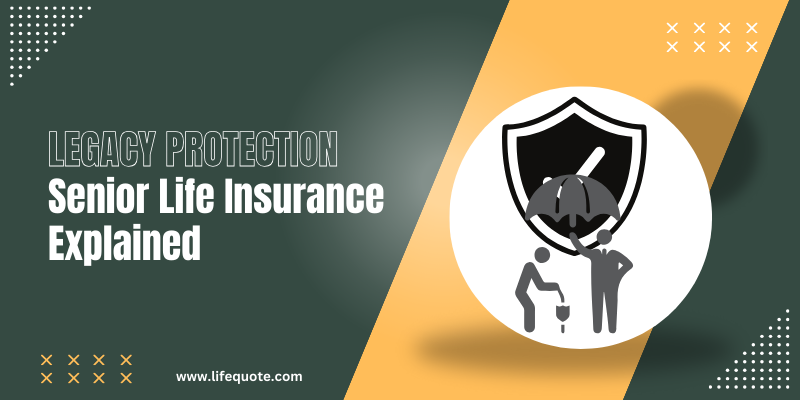- Speak to a licensed sales agent!
- (800) 521-7873
Term Insurance vs Accidental Insurance: Demystifying the Difference
Hey there, insurance explorers! Today, we’re embarking on a journey to demystify the world of insurance, specifically delving into the differences between term life insurance and accidental insurance. Buckle up as we navigate through the complexities and shed light on these crucial financial safety nets.
Let’s start with the basics.
Understanding Term Life Insurance:
Let’s kick things off with term life insurance. Imagine it as your trusty shield, designed to protect your loved ones financially in the unfortunate event of your passing during a specified period, known as the “term.” It’s like having a safety net that ensures your family’s financial stability, even if you’re not around to provide for them.
How Does Term Life Insurance Work?
Term life insurance operates on a simple premise: you pay premiums—either monthly or annually—in exchange for coverage for a predetermined period, typically ranging from 10 to 30 years. Should you pass away within this period, your beneficiaries receive a lump-sum payment, known as the death benefit, tax-free. It’s a straightforward arrangement aimed at providing peace of mind during life’s uncertainties.
Key Features of Term Life Insurance:
- Affordability: Term life insurance is often more affordable compared to other types of life insurance, making it an attractive option for individuals seeking basic coverage without breaking the bank.
- Flexibility: With term life insurance, you have the flexibility to choose the coverage amount and term length based on your specific needs and budget. Whether you’re looking for coverage until your children are financially independent or to pay off a mortgage, term life insurance offers customizable solutions.
- Pure Protection: Unlike permanent life insurance policies, such as whole life or universal life insurance, term life insurance focuses solely on providing death benefit coverage without any cash value accumulation component. It’s insurance in its purest form, serving its intended purpose without additional complexities.
Now, Let’s Talk Accidental Insurance:
While accidents can’t always be predicted, their financial effects don’t have to be. Accidental insurance steps in to offer an extra layer of protection specifically tailored to cover injuries or death resulting from accidents. Think of it as a safety harness, providing financial support in the face of unexpected mishaps.
How Does Accidental Insurance Work?
Accidental insurance operates on a narrower scope compared to term life insurance. It kicks in only if the insured’s death or injuries are directly caused by an accident, such as a car crash, slip and fall, or other unforeseen events specified in the policy. The coverage extends beyond medical expenses to include benefits like disability income and accidental death benefits.
Key Features of Accidental Insurance:
- Supplemental Coverage: Accidental insurance serves as supplemental coverage to existing health or life insurance policies. It fills the gaps by providing additional benefits specifically for accident-related incidents, complementing your overall financial protection strategy.
- No Medical Exam Required: Unlike some life insurance policies that may require a medical examination, accidental insurance typically does not involve extensive underwriting processes. This makes it accessible to individuals who may have difficulty obtaining traditional life insurance due to health reasons.
- Affordable Premiums: Accidental insurance premiums are often affordable, making it an accessible option for individuals seeking extra peace of mind without a significant financial commitment. The cost varies depending on factors such as age, occupation, and desired coverage amount.
So, What Sets Them Apart?
Now that we’ve explored the ins and outs of term life insurance and accidental insurance, let’s highlight the key differences between the two:
- Coverage Scope: Term life insurance provides coverage for death due to any cause during the policy term, whereas accidental insurance specifically covers death or injuries resulting from accidents.
- Duration of Coverage: Term life insurance offers coverage for a specified term, while accidental insurance typically provides coverage for as long as the policy remains in force, regardless of age.
- Benefit Payout: In term life insurance, the death benefit is paid out to beneficiaries regardless of the cause of death, whereas accidental insurance pays benefits only for covered accidents.
- Premiums and Underwriting: Term life insurance premiums are based on factors such as age, health, and coverage amount, with underwriting often involving a medical examination. On the other hand, accidental insurance premiums are generally lower and may not require a medical exam, focusing primarily on the insured’s occupation and lifestyle.
Choosing the Right Coverage for You:
When it comes to selecting the right insurance coverage, there’s no one-size-fits-all solution. It ultimately boils down to your individual needs, priorities, and budget. Here are some factors to consider:
- Assess Your Needs: Evaluate your financial obligations, such as mortgage payments, debt, and future expenses, to determine the appropriate amount of coverage needed to safeguard your family’s financial well-being.
- Consider Your Lifestyle: If you work in a high-risk environment or engage in activities that increase your risk of accidents, such as extreme sports, accidental insurance can provide added peace of mind.
- Review Policy Details: Take the time to thoroughly review the terms, conditions, and exclusions of each insurance policy to ensure it aligns with your expectations and provides the necessary coverage.
- Seek Professional Guidance: Insurance can be complex, so don’t hesitate to seek advice from a licensed insurance agent or financial advisor who can help you navigate your options and make informed decisions.
In conclusion,
Both term life insurance and accidental insurance play vital roles in providing financial security and peace of mind. Whether you’re safeguarding your family’s future with term life insurance or adding an extra layer of protection with accidental insurance, the key is to choose coverage that fits your unique needs and circumstances. By understanding the differences between these insurance types and carefully assessing your requirements, you can embark on a journey towards financial resilience and protection against life’s uncertainties.
Remember, in the vast sea of insurance options, knowledge is your compass, guiding you towards a brighter and more secure future. Safe travels, fellow adventurers!




